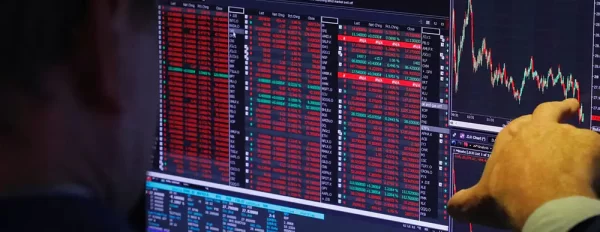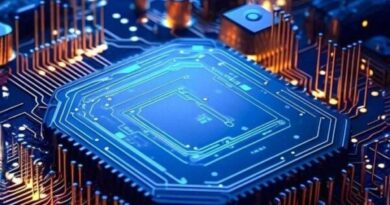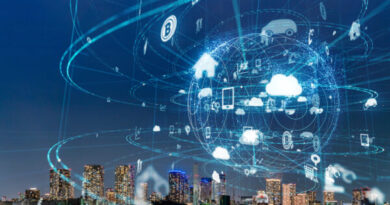The Rise of Renaissance Technology: A New Era of Innovation
When we think of the Renaissance, our minds drift to an age of unparalleled cultural, artistic, and intellectual growth—an era when visionaries like Leonardo da Vinci, Michelangelo, and Galileo sparked revolutions that would shape human history. Today, we are on the verge of a new Renaissance, but this time, it’s driven by the power of technology. This Renaissance Technology is a fusion of human creativity and advanced innovation, where the digital and the physical worlds converge to push the boundaries of what’s possible, much like the 15th century did for art and science. It’s an era where the traditional rules no longer apply, and the limits of technology are being redefined every day.
Blurring the Lines: The Fusion of Creativity and Technology
The essence of the original Renaissance was the merging of seemingly opposite worlds—art and science—to create something truly revolutionary. Today’s Renaissance Technology follows a similar path. We’re seeing technologies like AI-generated art and 3D printing transform the creative landscape, allowing us to build and design in ways that were once confined to the realms of imagination. Artists, designers, and technologists are working together in unprecedented ways, crafting experiences that blend the digital with the physical.
AI isn’t just automating tasks anymore; it’s becoming a tool for creative expression. From designing intricate patterns for fashion to composing symphonies, the combination of human creativity and machine learning is unlocking new forms of art. Similarly, 3D printing allows for the rapid prototyping of products, sculptures, and even architectural structures. We’re witnessing a revival of innovation where technology enhances creativity, much like how Renaissance thinkers embraced new tools to revolutionize their work.
Human-Centered Design: Putting People at the Core of Innovation
The Renaissance wasn’t just about art—it was also a shift in thinking. Humanism, which placed individuals at the center of philosophical and intellectual exploration, was a driving force of the period. In today’s Renaissance Technology, we see a similar shift toward human-centered design. This concept ensures that technology isn’t merely a collection of complex tools, but innovations that serve real human needs.
Devices like smart homes, wearable health tech, and AI-driven personal assistants are all designed with the user at the core. These innovations aim to enhance the quality of life, ensuring that technology integrates seamlessly into daily life. It’s not about overwhelming people with complexity but making the digital world more intuitive and accessible.
Take wearable devices like smartwatches and fitness trackers, for example. These are designed to enhance human well-being, from tracking heart rates and sleep patterns to alerting users about potential health risks. In this new Renaissance, the focus is on creating a harmonious relationship between people and the tech that surrounds them.
Blockchain: A Renaissance of Trust and Decentralization
Just as the printing press democratized access to knowledge during the original Renaissance, blockchain technology is revolutionizing trust and decentralization in the digital age. In a world where data is the new currency, trust is becoming more valuable than ever before. Blockchain represents a shift toward transparency and accountability, allowing for secure and decentralized transactions without the need for a central authority.
This digital renaissance of trust extends beyond cryptocurrency. Blockchain has far-reaching implications for sectors like healthcare, supply chains, and even voting systems. Its potential to create transparent, tamper-proof systems echoes the philosophical shifts of the Renaissance, where power and knowledge became decentralized, accessible to more people than ever before.
Quantum Computing: Redefining the Future of Technology
The Renaissance was marked by paradigm shifts—breakthroughs in understanding that transformed the way humanity viewed the world. Today, quantum computing is emerging as one of the most profound shifts in modern technology. Quantum computers operate on principles of quantum mechanics, enabling them to solve complex problems at speeds that traditional computers could never achieve.
Whereas classical computers process information in binary (ones and zeroes), quantum computers use quantum bits or qubits, which can exist in multiple states simultaneously. This allows quantum computers to tackle problems such as complex molecular modeling, weather forecasting, and cryptography in ways we’ve never seen before.
In many ways, quantum computing is the ultimate embodiment of Renaissance Technology—it’s a force that will revolutionize industries from healthcare to cybersecurity. Just as the original Renaissance redefined the boundaries of science, quantum computing is poised to redefine the limits of what technology can accomplish.

Ethical Innovation: The Responsibility of Renaissance Technology
The original Renaissance didn’t just spark progress; it also raised deep philosophical and ethical questions about the role of science and art in society. Similarly, today’s Renaissance Technology comes with its own set of ethical challenges. As AI, robotics, and automation become more integrated into our lives, we must ask: What are the ethical implications of these advancements?
The debate around AI ethics, data privacy, and automation’s impact on jobs is as relevant today as philosophical questions were in the 15th century. Renaissance Technology isn’t just about progress for progress’s sake; it’s about thoughtful innovation that considers the broader impact on society. Whether it’s ensuring that AI systems are unbiased, or that automation doesn’t displace workers without a plan for reskilling, the modern Renaissance is just as much about responsibility as it is about innovation.
Exploration in the Digital Age: Virtual Realities and Space
Exploration was a defining feature of the Renaissance. Thinkers and explorers like Galileo and Columbus charted new territories and changed our understanding of the world. In today’s technological Renaissance, we are once again exploring—this time, in virtual worlds and outer space.
The rise of the metaverse represents a new age of digital exploration. Virtual worlds are being built where people can interact, create, and conduct business in entirely new ways. Companies are investing billions into creating immersive experiences where people can live, work, and play in digital environments. Similarly, advancements in augmented reality (AR) and virtual reality (VR) are opening new frontiers in entertainment, education, and healthcare.
At the same time, space exploration is experiencing its own technological Renaissance. From Mars missions to private space travel, humanity is venturing further than ever before. Companies like SpaceX are paving the way for a future where space travel may become as routine as air travel. The spirit of exploration that defined the Renaissance is alive and well in today’s Renaissance Technology, but the frontiers we’re exploring are digital and interplanetary.
Conclusion: The Dawn of a New Renaissance
As we stand on the edge of this Renaissance Technology, we are reminded of the limitless potential that comes when human ingenuity and technological innovation intersect. This is more than just an era of progress—it’s a time of transformation where creativity, ethics, and science collide to redefine the future.
The boundaries of what technology can achieve are expanding daily, much like the original Renaissance pushed the limits of art, science, and philosophy. This new era will shape the way we live, work, and interact with the world, echoing the transformative power of the 15th century but in ways that are uniquely digital, decentralized, and global.
The future belongs to those who embrace this new Renaissance—those who see technology not just as a tool but as a canvas for reimagining the world. In this age of Renaissance Technology, the opportunities are boundless, and the only limits are those we place on ourselves.
FAQs:
- What is Renaissance Technology?
Renaissance Technology is a new era where creativity and cutting-edge innovations like AI, blockchain, and quantum computing converge to revolutionize industries. It mirrors the cultural and intellectual growth of the historical Renaissance but focuses on today’s technological advancements. - How does Renaissance Technology differ from traditional tech evolution?
Unlike typical technological advancements that prioritize efficiency, Renaissance Technology blends creativity, ethics, and innovation. It seeks to create solutions that not only push the boundaries of technology but also enhance human experiences and meet societal needs in unique, meaningful ways. - What are some examples of Renaissance Technology in action?
Key examples include AI-generated art, blockchain-based systems for secure transactions, and quantum computing’s potential for solving complex problems. Other innovations like virtual and augmented reality, as well as human-centered design, highlight the creative intersection between technology and humanity. - Why is human-centered design a core part of Renaissance Technology?
Human-centered design focuses on creating technology that directly benefits people by addressing real-world problems and enhancing usability. This approach ensures that technological progress is intuitive and meaningful, putting human needs at the forefront of every innovation. - How does blockchain contribute to Renaissance Technology?
Blockchain introduces a transparent, decentralized system for conducting secure transactions without relying on central authorities. This transformative technology fosters trust, reshaping industries such as finance, supply chain management, and even healthcare by enhancing transparency and accountability. - How is AI enhancing creativity through Renaissance Technology?
AI is transforming creative industries by collaborating with humans to produce art, music, and design. Through advanced algorithms, AI can generate new ideas, patterns, and experiences, pushing creative boundaries and unlocking previously unimaginable possibilities. - Why is quantum computing pivotal to Renaissance Technology?
Quantum computing is redefining what’s possible with its ability to process vast amounts of data at speeds unattainable by classical computers. It’s set to revolutionize fields such as cryptography, medical research, and climate modeling, enabling breakthroughs that were once out of reach. - What ethical challenges arise from Renaissance Technology?
With great innovation comes the responsibility to navigate ethical issues like AI bias, privacy concerns, and the displacement of jobs through automation. Renaissance Technology encourages developers to balance progress with societal impacts, ensuring technology benefits humanity as a whole. - How does Renaissance Technology influence modern exploration?
Renaissance Technology drives exploration in both the virtual and physical worlds. Innovations in virtual reality, augmented reality, and space travel are expanding frontiers, enabling new forms of exploration, whether in digital environments or the vastness of outer space. - Which industries are most transformed by Renaissance Technology?
Almost every industry is being impacted, from healthcare with AI-driven diagnostics, to finance with blockchain, to entertainment with AI-generated content. Renaissance Technology is reshaping sectors like education, agriculture, and energy, opening up endless possibilities. - How does Renaissance Technology shape the future of innovation? Renaissance Technology brings a holistic approach to innovation, where breakthroughs are balanced with creativity and ethical considerations. It promotes responsible, imaginative progress that seeks to enrich human lives and address global challenges in ways that go beyond technical solutions.
- Can Renaissance Technology address global challenges like climate change?
Yes, Renaissance Technology has the potential to tackle global issues. From green technologies and AI-powered environmental monitoring to blockchain for transparent sustainability, this era of innovation is making strides in reducing carbon footprints and advancing renewable energy. - Is Renaissance Technology accessible to everyone?
While leading industries are often the early adopters, Renaissance Technology is becoming more accessible. User-friendly applications of AI, blockchain, and virtual reality are gradually democratizing access, allowing individuals and smaller businesses to benefit from these advancements.




